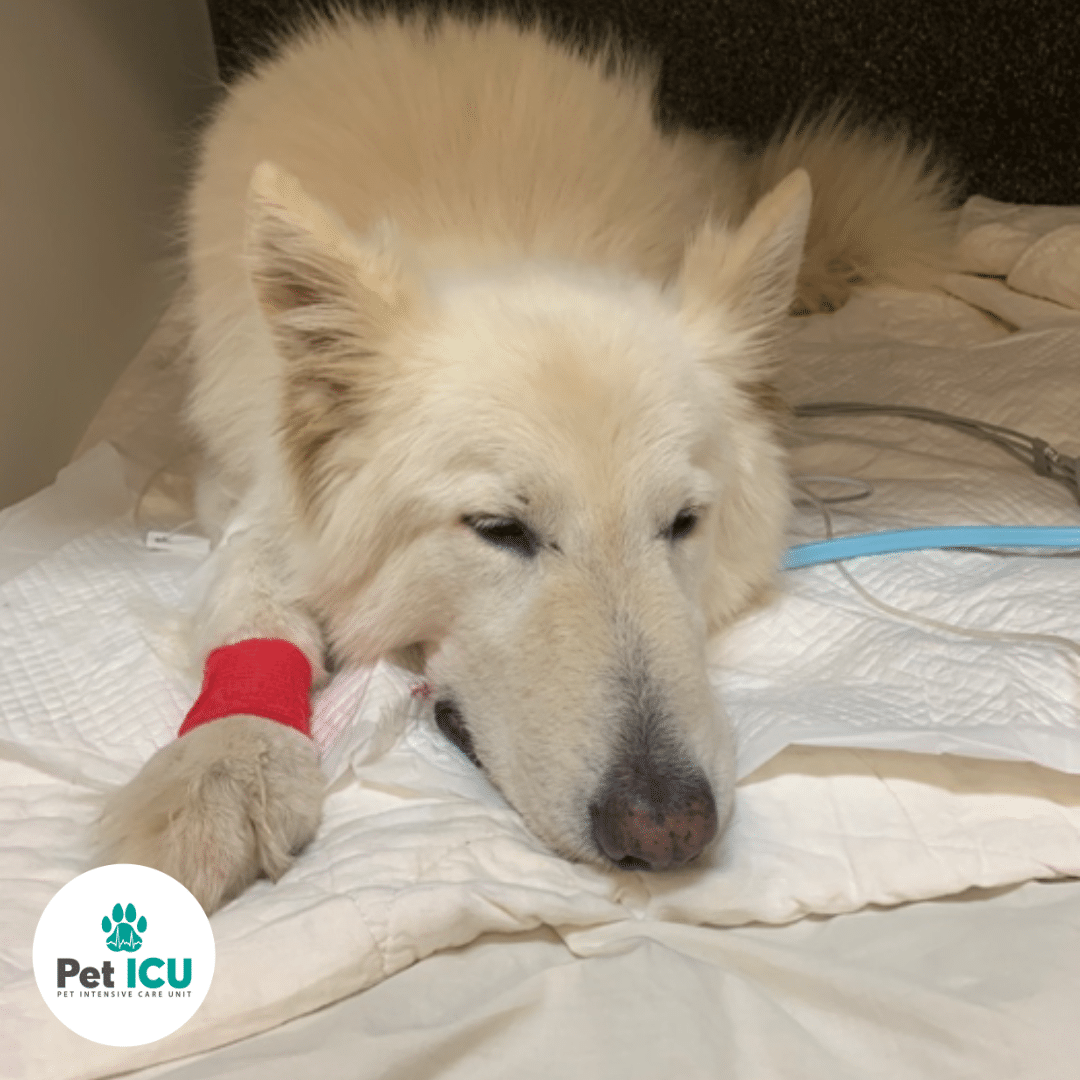While walking to her car on a Sunday morning, Haru’s mum saw a snake in the yard but wasn’t too worried. After returning home 15 minutes later, she notice Haru, a nine-year-old White Swiss Shepherd, had blood on his face and body. After cleaning most of the blood away, the source of the blood was found; a wound on the right side of his face that was still continuing to bleed. Suspecting an encounter with the snake she saw, Haru’s mum rushed him to us after taking photos of what was later identified as a red bellied black snake.
Once Haru arrived at our hospital he was rushed out to the crash bench where our vets immediately started to assess his injuries and vitals. Initial observations showed everything was within normal limits, however blood and urine was collected so as a snake venom detection kit could be performed, which returned positive for red bellied black snake. Further tests were done to check the levels of muscle breakdown and blood clotting time as these are both known to be effected by red bellied black snake envenomation. Results from the activated clotting time test show the toxin from the snake was causing Haru’s blood to take longer than normal to clot, and his levels of muscle breakdown were elevated.

A vial of snake anti-venom was given and Haru was monitored closely for any reaction. Six hours later another blood test was taken which found the anti-venom had improved Haru’s blood clotting time. With some pain relief and fluids, Haru slept comfortably in his bed in hospital.

Haru remain with our Pet Intensive Care Unit team for close monitoring of his pain and also to closely monitor his urine. After two days in hospital, Haru developed pigmenturia (abnormal coloured urine) due to his body breaking down his red blood cells and his muscles – this meant his urine went from yellow in colour to port wine coloured. Emergency and Critical Care specialist, Dr Ellie Leister administered a second vial of snake anti-venom as it was likely the first vial he received had not entirely neutralised a component of the red bellied black snake venom. Within the next 12 hours it was evident the second vial of anti-venom had begun working as Haru’s urine colour was beginning to improve. After four days in the Pet Intensive Care Unit, Haru’s nauseousness was under control and he had began to eat and drink by himself again, and was able to go home to his relieved hoomans.
If your pet has been bitten by a snake or you suspect they have been, visit your closest Animal Emergency Service hospital or your local vet immediately.
For more information about snake bites, visit our Snake Bites on Dogs Guide.


